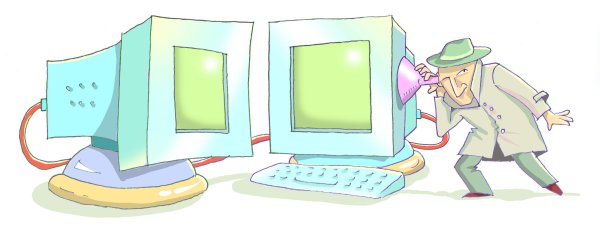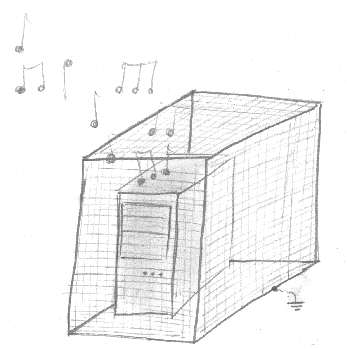
| This is an archived copy of the
web page accompanying the Eurocrypt 2004 rump session presentation,
originally placed at http://www.wisdom.weizmann.ac.il/~tromer/acoustic.
For further details on those results, see Eran Tromer's PhD thesis. Newer results are now available at http://cs.tau.ac.il/~tromer/acoustic. |

 Below are several short samples, given in the form of a
spectrogram and a WAV file. The spectrograms are snapshots from the Baudline
signal analysis software running on GNU/Linux; horizontal axis is frequency
(0Hz to 48KHz), vertical axis is time, and intensity is determined by power
per frequency window (the greener the stronger). All recordings were
equalized (roughly -10dB below 1KHz, +10dB above 10KHz) using the mixer's
rudimentary built-in equalizer.
Below are several short samples, given in the form of a
spectrogram and a WAV file. The spectrograms are snapshots from the Baudline
signal analysis software running on GNU/Linux; horizontal axis is frequency
(0Hz to 48KHz), vertical axis is time, and intensity is determined by power
per frequency window (the greener the stronger). All recordings were
equalized (roughly -10dB below 1KHz, +10dB above 10KHz) using the mixer's
rudimentary built-in equalizer.